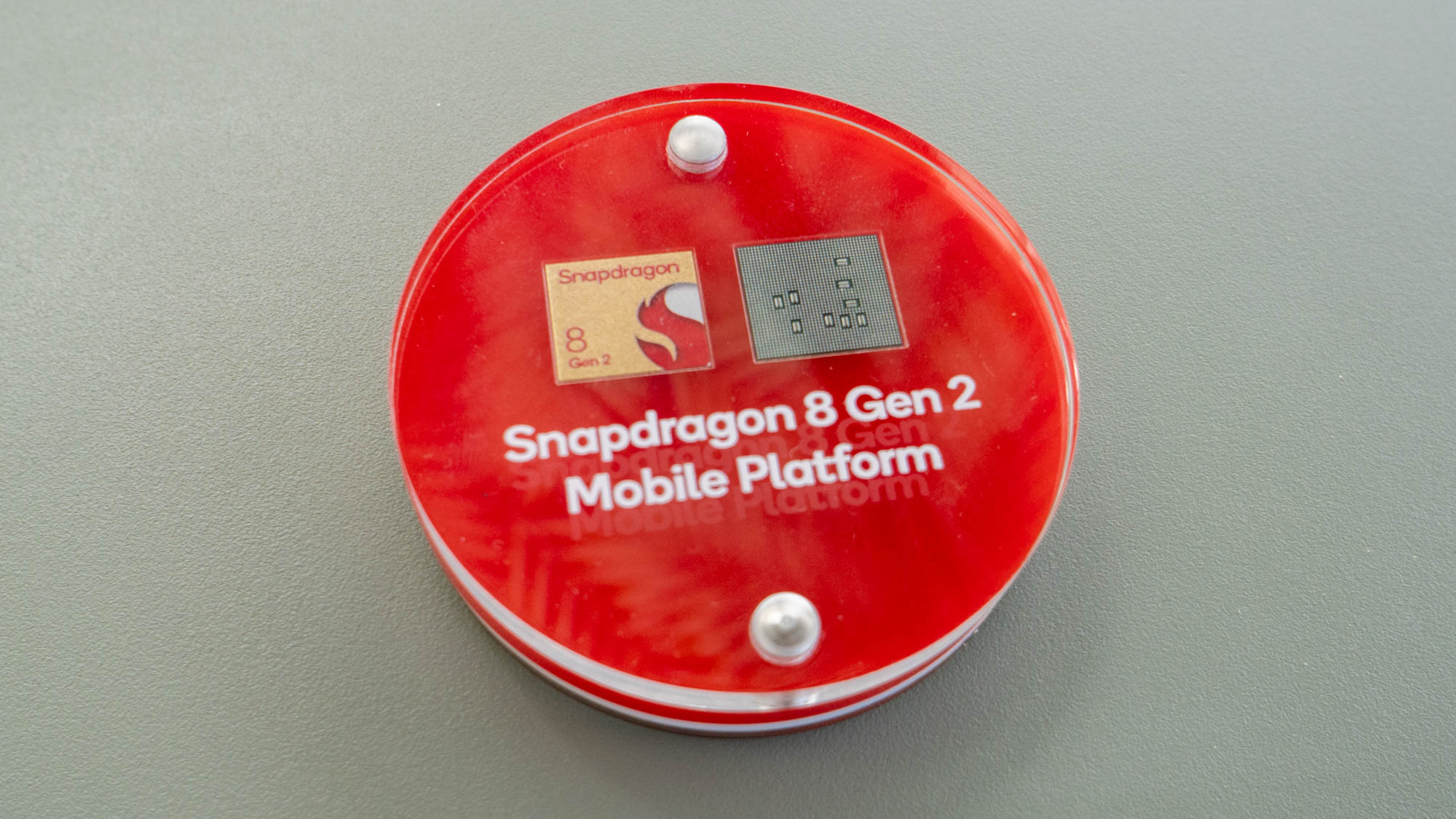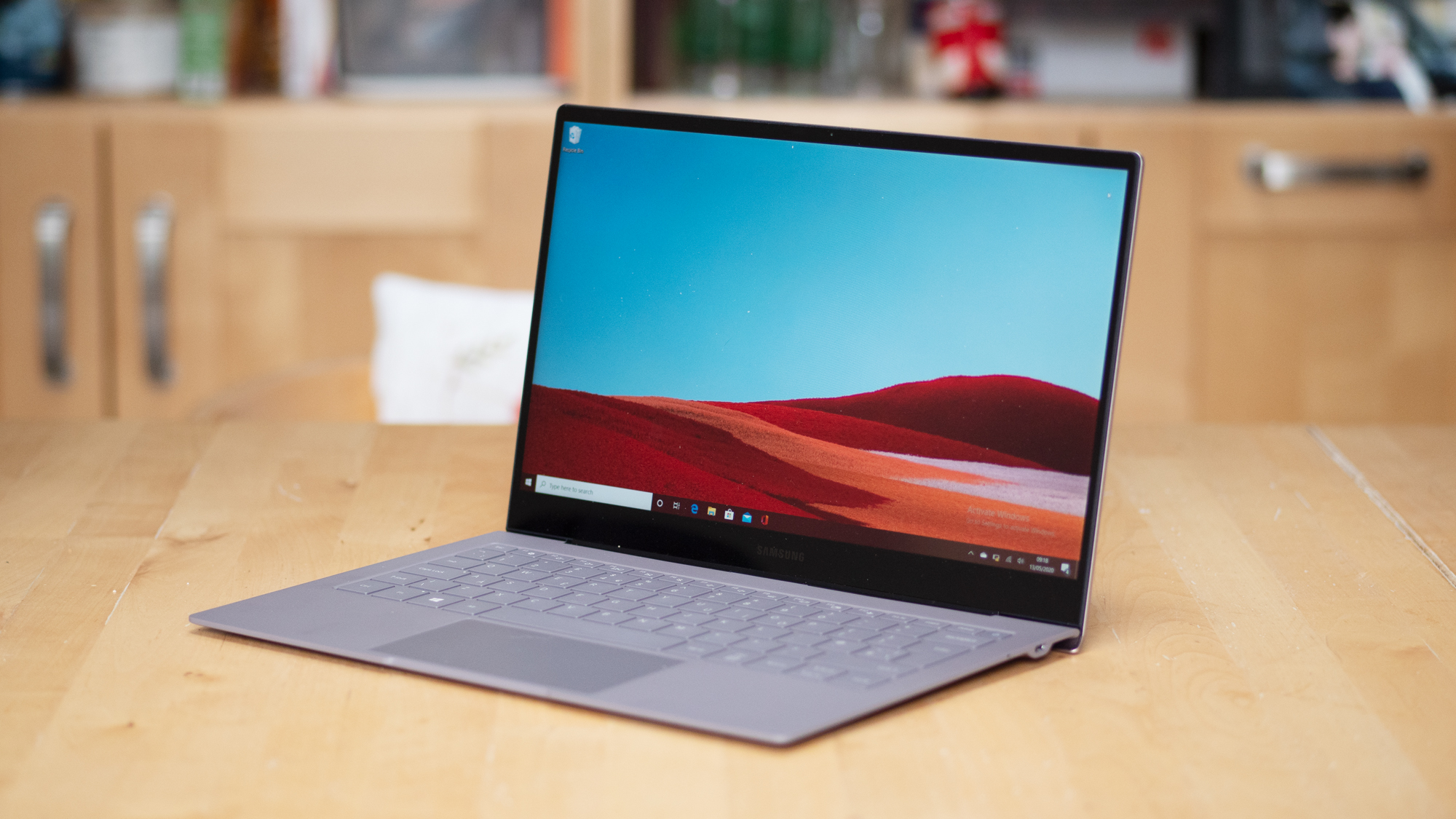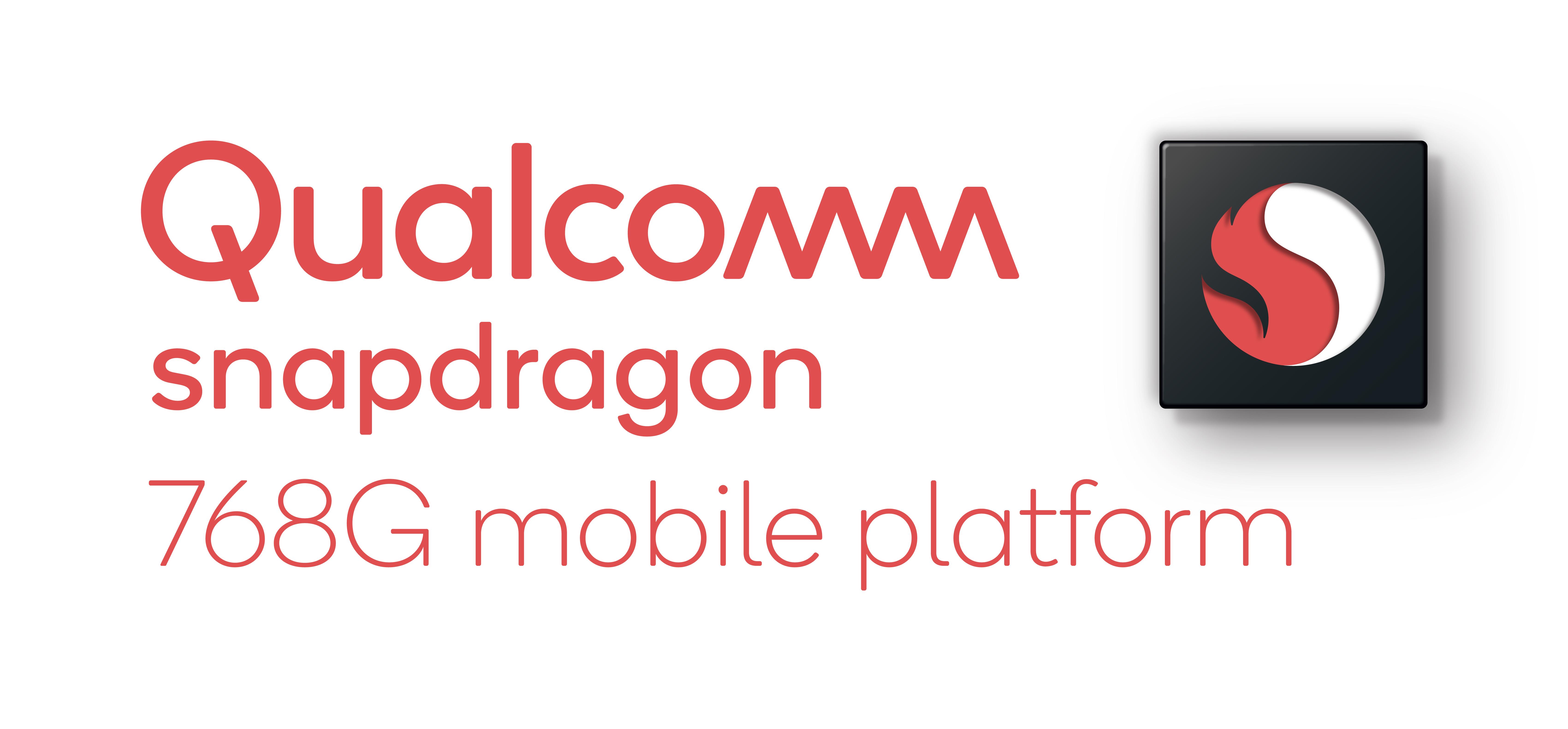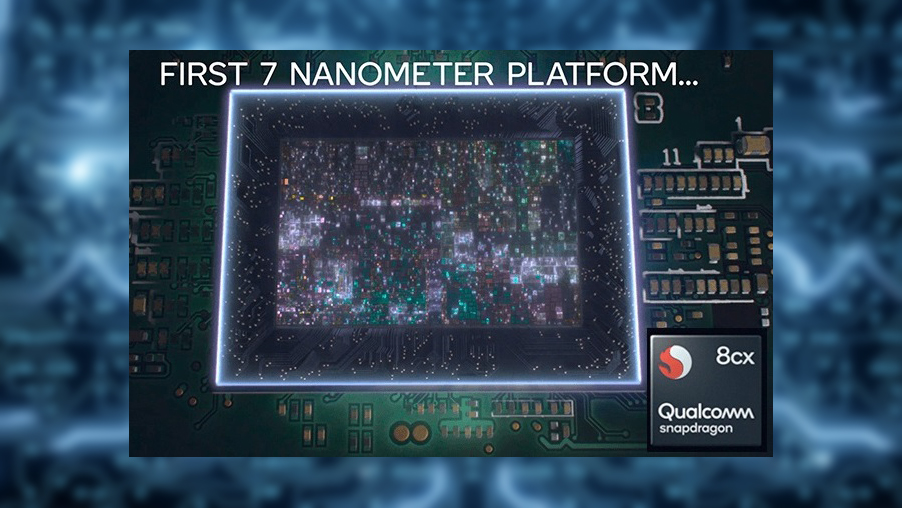Qualcomm Snapdragon Summit: Snapdragon 8 Gen 2 platform unlocks new AI capabilities
Announced at Qualcomm's Snapdragon Summit in Hawaii, the latest chipset features improved AI support, Wi-Fi 7, and faster overall performance


Qualcomm has officially unveiled the next iteration of its Snapdragon mobile CPU platform, the Snapdragon 8 Gen 2, promising a range of improvements with a particular focus on AI technologies.
Launched at the company’s annual Snapdragon Summit event in Hawaii, the Snapdragon 8 Gen 2 is ‘purpose built’ for AI, with an improved ‘AI Engine’ powered by an updated Qualcomm Hexagon processor.
Qualcomm said the chip has seen major architectural changes, such as the addition of a Tensor accelerator chip which is double the size of the previous generation, resulting in more than 4x faster AI performance and a 60% performance-per-watt improvement in power efficiency.
“We designed the [Snapdragon] 8 Gen 2 with one key technology: artificial intelligence,” said the company’s senior vice-president of engineering, Chris Patrick. “Qualcomm is the AI inferencing leader at the edge."
"Today we've already powered billions of edge devices across the world. We built on that expertise to make our new flagship an engine of innovation, a true AI marvel. We've integrated AI across the entire platform to usher in the new era of AI accelerated experiences.”
The new platform also includes an updated Qualcomm Kryo CPU with four performance cores and three efficiency cores, delivering up to speeds of 2.8GHz and 2GHz respectively.
A 3.2GHz prime core based on Arm’s Cortex-X3 technology also features, as does a new Adreno GPU with 25% improvements for both efficiency and speed. The company said this configuration offers up to 30% faster overall performance and up to 40% better power efficiency for longer battery life.
Get the ITPro daily newsletter
Sign up today and you will receive a free copy of our Future Focus 2025 report - the leading guidance on AI, cybersecurity and other IT challenges as per 700+ senior executives
Another new feature introduced with this platform is the ‘Cognitive ISP’ - a physical link between the Qualcomm Spectra ISP and the Hexagon AI processor which uses neural network technology to automatically perform semantic segmentation.
This means that the camera itself can contextually recognise elements within a photo such as faces, hair, clothes and skies - and perform real-time adjustments to each one individually.
In addition to advanced on-device image processing, the AI functions supported by the new platform include multi-language translation, AI autofocus, and the world’s first support for INT4 on mobile, which essentially allows AI models to be trained on four-bit integers, rather than 32-bit floating-point integers.
According to Ziad Asghar, VP product management for mobile at Qualcomm, what this means is that more neural models will be able to run concurrently on the device.

“What we are providing is what we call Qualcomm AI Studio, which is a set of tools that allow you to take a model and actually shrink it down to integer four. And by doing that, now, instead of having to process 32 bits, you've got to process four bits only. That means you've got to do a lot less work, which means you've got to spend a lot less power.
“We are the first in the industry to do this,” Asghar said. “So it brings a huge advantage; a lot more AI is going to be able to fit in the same amount of processing, which is very, very powerful for us.”
Condensing 32-bit models to INT4 reduces the power consumption by a factor of 64, he said, and the company’s introduction of micro-tile inferencing also minimises the number of reads and writes for improved performance and longevity.
The company is aiming to attract more AI developers to the platform by unlocking these features, and is releasing a new developer kit to make it easier for them to start creating compatible machine learning applications.
RELATED RESOURCE

Magic quadrant for enterprise conversational AI platforms
An evaluation of the conversational AI platform (chatbot) market
The Qualcomm Innovators Development Kit will initially be made available to universities and research institutions before being rolled out on a wider basis in the future.
Qualcomm has also used these capabilities to add functionality to its Sensing Hub which uses dual AI processors to provide real-time contextual awareness by combining input from a range of sensors across the device, including cameras, microphones, gyroscopes, and more.
This will enable OEMs and developers to introduce a range of additional features, with some theoretical examples including the ability to identify the sound of glass breaking during the night to alert the user, and the ability to detect the orientation of the user’s face while lying down and prevent unwanted screen rotation.
Snapdragon 8 Gen 2 supports dual-active dual-SIM 5G, with a dedicated 5G AI processor to deliver better speed and stability throughput in both mmWave and sub-6GHz connections.
It’s also the first commercial chipset to support Wi-Fi 7 connectivity via the integrated FastConnect 7800 chip, taking advantage of the increasing number of Wi-Fi 7 routers coming to market. Qualcomm is boasting up to 5.8Gb/sec speeds, and less than 2ms latency, with cloud gaming and 4K streaming touted as key use cases.
Backing this up is support for the HDR10+ Adaptive standard, which compensates for changing lighting conditions when viewing HDR content, and OLED ageing compensation to keep OLED displays such as those found on the Samsung Galaxy S22 looking their best after prolonged use.
The Snapdragon 8 Gen 2 is also the first mobile chipset to support Unreal Engine 5’s Metahumans framework for creating and using hyper-realistic characters in games, and offers real-time hardware accelerated ray tracing, as well as 4K video playback at 60Hz.
Finally, Qualcomm’s AI tools are also being used to increase device security, including making facial unlock more secure by capturing data from facial unlock attempts, and routing it securely through to the digital signal processor (DSP) to perform detailed analysis on facial muscle movements and skin colour changes to ensure authenticity.
The new platform will be used in devices from major smartphone manufacturers including Oppo, OnePlus, Sony, and more, with the first Snapdragon 8 Gen 2 smartphones expected to hit shelves by the end of this year.
Adam Shepherd has been a technology journalist since 2015, covering everything from cloud storage and security, to smartphones and servers. Over the course of his career, he’s seen the spread of 5G, the growing ubiquity of wireless devices, and the start of the connected revolution. He’s also been to more trade shows and technology conferences than he cares to count.
Adam is an avid follower of the latest hardware innovations, and he is never happier than when tinkering with complex network configurations, or exploring a new Linux distro. He was also previously a co-host on the ITPro Podcast, where he was often found ranting about his love of strange gadgets, his disdain for Windows Mobile, and everything in between.
You can find Adam tweeting about enterprise technology (or more often bad jokes) @AdamShepherUK.
-
 Global cybersecurity spending is set to rise 12% in 2025 – here are the industries ramping up investment
Global cybersecurity spending is set to rise 12% in 2025 – here are the industries ramping up investmentNews Global cybersecurity spending is expected to surge this year, fueled by escalating state-sponsored threats and the rise of generative AI, according to new analysis from IDC.
By Ross Kelly Published
-
 Google Cloud is leaning on all its strengths to support enterprise AI
Google Cloud is leaning on all its strengths to support enterprise AIAnalysis Google Cloud made a big statement at its annual conference last week, staking its claim as the go-to provider for enterprise AI adoption.
By Rory Bathgate Published
-
 Citi to transition 70% of its workforce to Snapdragon mobile devices
Citi to transition 70% of its workforce to Snapdragon mobile devicesNews Longer battery life will allow the company to eliminate “thousands of tonnes” of CO2
By Adam Shepherd Published
-
 Qualcomm open to investing in Arm as part of consortium
Qualcomm open to investing in Arm as part of consortiumNews This comes after SK Hynix said it was interested in forming a consortium to acquire the British chipmaker
By Zach Marzouk Published
-
 Qualcomm unveils $1,500 smartphone for 'Snapdragon insiders'
Qualcomm unveils $1,500 smartphone for 'Snapdragon insiders'News Triple-lens handset made by Asus with Qualcomm technology will be available "soon"
By Bobby Hellard Published
-
 Qualcomm reveals Snapdragon 888 Plus 5G chipset
Qualcomm reveals Snapdragon 888 Plus 5G chipsetNews The new chipset boasts faster clock speeds and will boost AI performance on Android devices by 20%
By Danny Bradbury Published
-

 Samsung Galaxy Book S review: ARMed and dangerous
Samsung Galaxy Book S review: ARMed and dangerousReviews So long, Surface Pro X - Samsung shows us how it’s really done
By Adam Shepherd Last updated
-
 Qualcomm announces Snapdragon 768G 5G platform
Qualcomm announces Snapdragon 768G 5G platformNews New platform delivers 15% faster graphics rendering than Snapdragon 765G
By Sarah Brennan Published
-
 Qualcomm announces 'extreme' ARM chip for thin and light PCs
Qualcomm announces 'extreme' ARM chip for thin and light PCsNews In the first of its kind, the new 7nm chip promises excellent performance on Windows machines
By Connor Jones Published
-
 Qualcomm and Baidu join forces to work on Snapdragon-powered AI tech
Qualcomm and Baidu join forces to work on Snapdragon-powered AI techNews Baidu's DuerOS AI platform will be available on the Snapdragon 845 chip arriving next year
By Clare Hopping Published